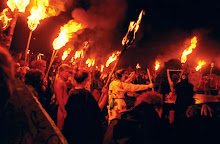 independent DIY alternative grassroots
independent DIY alternative grassroots& Rita Webb’s
Who's sorry now?
Mrs. Lovejoy was perfect. She had a beautiful face and a flawless figure. She always dressed with impeccable taste – hat, purse, and shoes matched to her stylish outfits – and not a hair or a speck of makeup out of place. Mrs. Lovejoy was divorced. Her husband had run off with a slovenly math teacher named Lila Scruggs.
All of the other women at church watched Mrs. Lovejoy with envy, while the men couldn't take their eyes off her, as she'd gracefully glide down the center aisle on Sunday mornings to her pew near the front, with two perfectly-groomed but very plain children in tow.
There were stories in the newspaper about Cynthia Lovejoy, the star of the Phoenix Ballet, and my mother said that she was the same one who went to our church. I was about nine years old when I first saw her name in the paper. The articles were always accompanied by black-and-white action photos in which it was impossible to see the ballerina's face.
So a few years later, when I began to read the text of the news items, I was shocked to learn that Mrs. Lovejoy's first name was Eleanor, and that, despite her graceful demeanor, she wasn't a dancer; it was her taciturn teenage daughter who starred in the Phoenix Ballet. Cynthia wasn't attractive, but she had waist-length black hair and a future. Mrs. Lovejoy was interviewed frequently, always making it clear that she was "giving Cynthia everything that I never had," but Cynthia never said anything to the reporters.
It was rumored that Cynthia's little brother had a name, but no one knew what it was. He was sent to reform school when he was fourteen for having committed arson.
Cynthia had been the main source of income for her mother for a long time. Cynthia was sick of ballet. She wanted to go to college and study philosophy. Mrs. Lovejoy said no. One day when no one else was around, Cynthia put the barrel of a .45-caliber revolver into her mouth and pulled the trigger. Mrs. Lovejoy came home and found blood all over her perfect, white floor.






